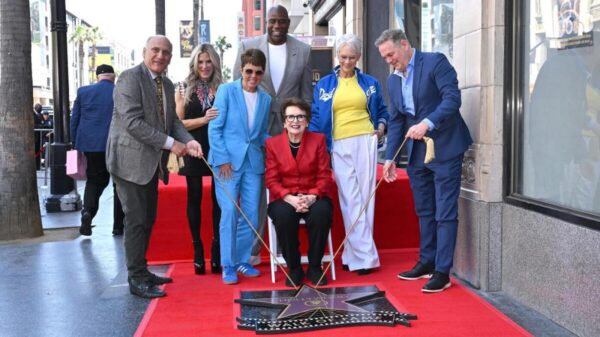The Dodgers (8-0) are off to the best start by a reigning champion. Just south, the Padres (7-0) are unbeaten, too. The Braves — one of the teams expected to challenge the Dodgers in the NL — are winless. Reigning MVPs Shohei Ohtani and Aaron Judge are still mashing home runs, and plenty of talented youngsters received big extensions less than a week after Opening Day.
But all the attention is on torpedo bats, the differently shaped bat that has helped power the Yankees’ historic offensive start. On the torpedo bats, the barrel is closer to the label and therefore closer to the batters’ hands. The Yankees had found that some of their batters, like Anthony Volpe and Jazz Chisholm Jr., made more contact with that area of the bat, and the Yankees put the torpedo bats in those players’ hands to decrease misses and increase barreled balls, former Yankees infielder Kevin Smith explained.
To be clear, this bat is — for now — completely legal under current MLB rules. And though it’s all the rage right now, it’s not exactly new, nor had it been some clandestine Yankees operation. As R.J. Anderson writes …
Some were used during last year’s postseason and then in the Arizona Fall League, a league-organized circuit that includes prospects from every organization. This spring, bat manufacturing company sales reps were out in force to offload as many torpedoes as possible.
Will these bats be banned? No one really knows. Should they be banned? Well, that’s up for debate. Either way, it’s far from the first controversial innovation in sports equipment history. Here are some others that burst onto the scene, only to be banned.
Batting Around: Should torpedo bats be banned? How MLB should handle the hottest new trend
Mike Axisa
MLB: Sticky stuff
Rules banning “sticky stuff” — soil, rosin, really any foreign substance — have existed for decades via Rules 3.01 and 6.02(c) and (d). However, MLB really cracked down on those rules in 2021 amid major offensive struggles. Starting pitchers would have multiple mandatory checks per game, and relief pitchers would be checked either at the conclusion of the first inning after entering the game or once they got pulled from the game, whichever happened first. Umpires could also check whenever they believed the ball felt sticky. In July 2021, Héctor Santiago was the first player ejected under the stricter rule enforcement.
NFL: Stickum
NFL.com ranks sticky gloves and Stickum 77th on its list of the “100 Greatest Game-Changers.” That’s a bit ironic because the league banned Stickum in 1981, even though the substance is still available commercially. In the 1970s and in 1980, many wide receivers and defensive backs lathered it on, with Raiders cornerback Lester Hayes as the poster boy for the Mueller Sports Medicine adhesive. He nabbed 13 interceptions in 1980, one year before Stickum got banned.
Golf: Anchored putting
When the USGA and the R&A banned anchored putting and the use of belly putters, it made sure to note it wasn’t an equipment ban; it was a technique ban. Golf’s two governing bodies noticed a rise in players “anchoring” the top of their putter to their stomach and introduced Rule 14-1b in 2013, prohibiting strokes made with the club or a hand gripping the club held directly against the player’s body or with a forearm held against the body to establish an anchor point that indirectly anchors the club. Players were given a multi-year grace period before it went into effect Jan. 1, 2016. Some of the players impacted went to arm anchoring, though others stopped using long putters altogether.
Swimming: Speedo LZR Racer
The LZR (pronounced “laser”) Racer took the swimming world by storm in early 2008. The full-body suit, made of woven elastane-nylon and polyurethane, helped compress the body and trap air to help swimmers maintain buoyancy. Studies showed that the suit could lower race times by roughly two percent. Michael Phelps was the face of Speedo’s advertisements for the suit, and it worked wonders for him … and others. Phelps won a record eight Olympic medals at Beijing 2008, and 98% of all swimming medalists wore the suit. FINA banned all body-length suits in 2009.
Running: Nike Alphafly
Eliud Kipchoge became the first person to run a sub-two-hour marathon in 2019, but the shoes he wore for it were banned shortly thereafter. Studies found that the Nike Alphafly gave runners up to a four percent increase in efficiency and a 3.4 percent increase in speed thanks to a trio of carbon plates and a technologically advanced midsole. In January 2020, the World Athletics Foundation ruled that shoes could not have more than one carbon plate and a midsole not exceeding 40 millimeters in height.
NBA: APL Concept 1
In 2010, the NBA banned the APL Concept 1 shoe, which was designed to make players jump higher. Athletic Propulsion Labs used Load ‘N Launch™ Technology, which served as a sort of spring and claimed to increase vertical leap as much as 3.5 inches. It was the first shoe the NBA had ever banned due to technological advantage.
Tennis: Spaghetti racket
The spaghetti racket experienced a massive spike in popularity in 1977. The racket features two sets of vertical strings and very few horizontal strings, and the vertical and horizontal strings were not intertwined. Rather, the horizontal strings were in between the stacked vertical strings. It allowed players to put tremendous spin on their shots and produce strange flight patterns on the ball. Mike Fishbach made a run at the 1977 U.S. Open using the racket, and a few other players found unlikely success with it as well, before it was banned just months after it emerged in the major professional ranks.
NASCAR: Jeff Gordon’s T-Rex
Jeff Gordon dominated the 1997 All-Star Race in the T-Rex, a car dreamed up and built by Hendrick Motorsports chassis engineer Rex Stump. The car, which included “softer front springs and stiffer rear springs and a bigger sway bar” according to crew chief Ray Evernham, passed post-race inspection, but officials told Gordon’s team not to use it again. It’s not the only car to be banned. Junior Johnson’s iconic 1966 “Yellow Banana” is another example.
Read the full article here


























































